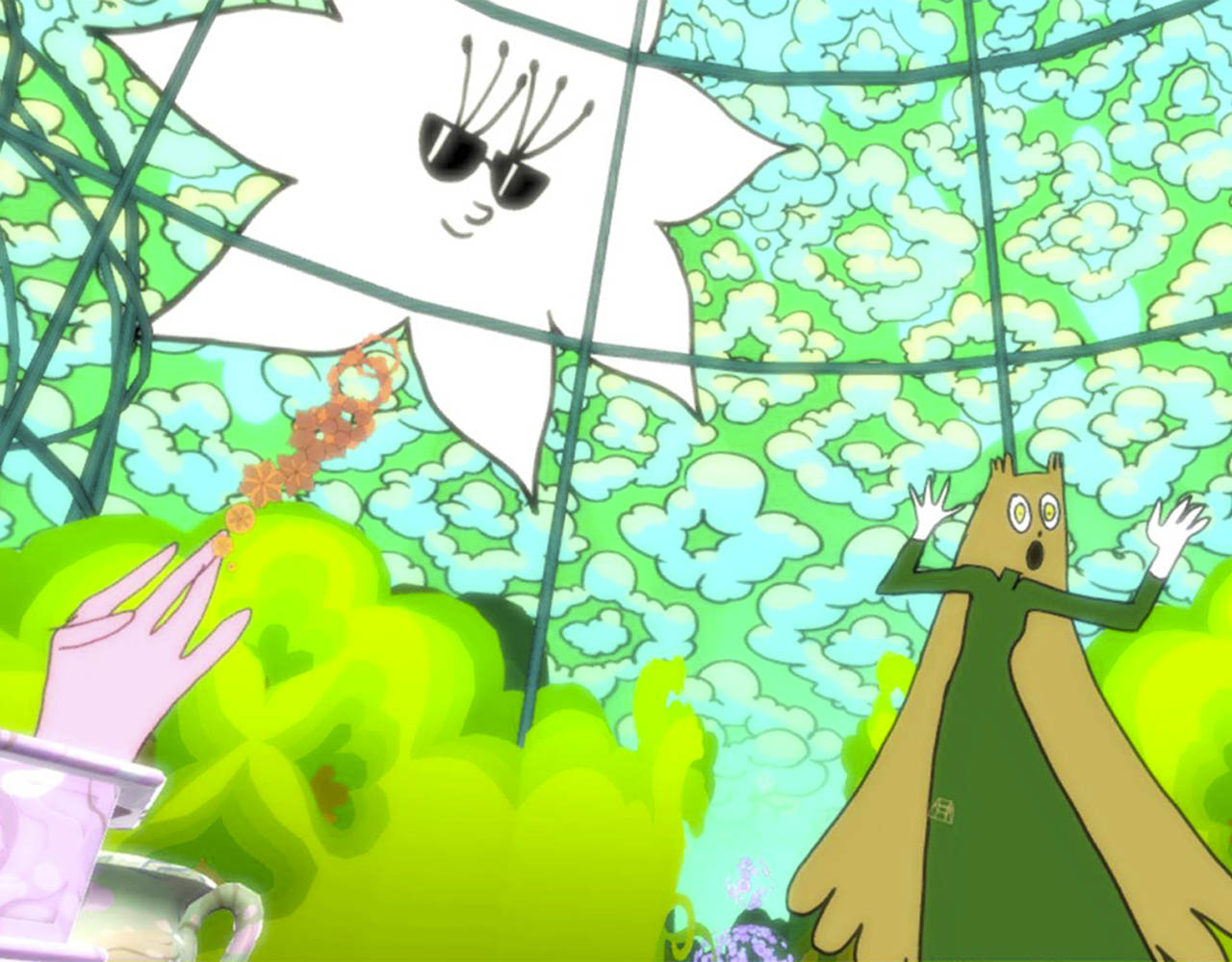The Museum of Symmetry premiered at the Ottawa International Animation Festival, which took place from Sept. 26 to Sept. 30.
This festival aims to showcase the future of animation as an art form, and to display the power of animation beyond the traditional borders of Saturday morning cartoons and light-hearted Disney films.
In addition to showing the classical form of feature films or short animation cinema, the festival makes an effort to demonstrate new modes of the art form to the public. The Virtual Reality installation, Museum of Symmetry, is one such exhibit.
Users of the Museum of Symmetry put on a headset with screened goggles and a large headset.
A small rectangular controller is used to perform actions, and, in the world of the exhibit, this controller transforms into objects like rackets, flashlights, and watering plants throughout the experience.
The user can’t see their arms or legs in the experience, only the shapeshifting remote.
The Museum of Symmetry has four different exhibits, each giving the user a small interactive challenge. Users can water groovy plants in a sphere, chase after pyramids with a flashlight, knock diamonds out of a balloon, and finally fly away into the beyond on a glowing manta ray.
“[Virtual reality] is for all the applications of animation now,” Thomas McSorley, a Carleton film studies professor, said. McSorley is also executive director of the Canadian Film Institute.
The VR experience combines basic geometrical shapes, video game elements, and motion controls.
Paloma Dawkins, VR animator, insists on calling the exhibition an “experience,” not a video game, but Museum of Symmetry can be found for free on Steam.
Dawkins said the focus is on the experience, rather than measuring scores like you would in a video game.
The idea for Museum of Symmetry came from her work on a desktop video game. Dawkins developed the idea to be an interactive VR experience.
“I like the comfort of these basic interactions . . . I like how it’s so intuitive—it’s like, ‘check out these diamonds and hit them.’ It’s so engrained in our brains, just to interact with these digital things,” she said. “I wanted to use that to engage people, but I didn’t want any kind of measuring system.”
Dawkins revels in the opportunity to create experiences, rather than objective-based games. VR has open-endedness other mediums don’t, Dawkins said.
“It never clicked until we were like, ‘let’s just do this in VR.’ It’s so immersive, it’s just kind of moving from one place to another, instead of feeling like levels,” Dawkins said.
Dawkins said she thinks that artists are just scratching the surface of the artistic potential of virtual reality, adding that the possibilities still remain in storytelling and moving pictures—not just for video games, but for art.
“I don’t know if it’s the new medium of art,” she said, “but I think it just shows us how much is out there . . . there’s just so much more to do and to discover.”
Provided photo






